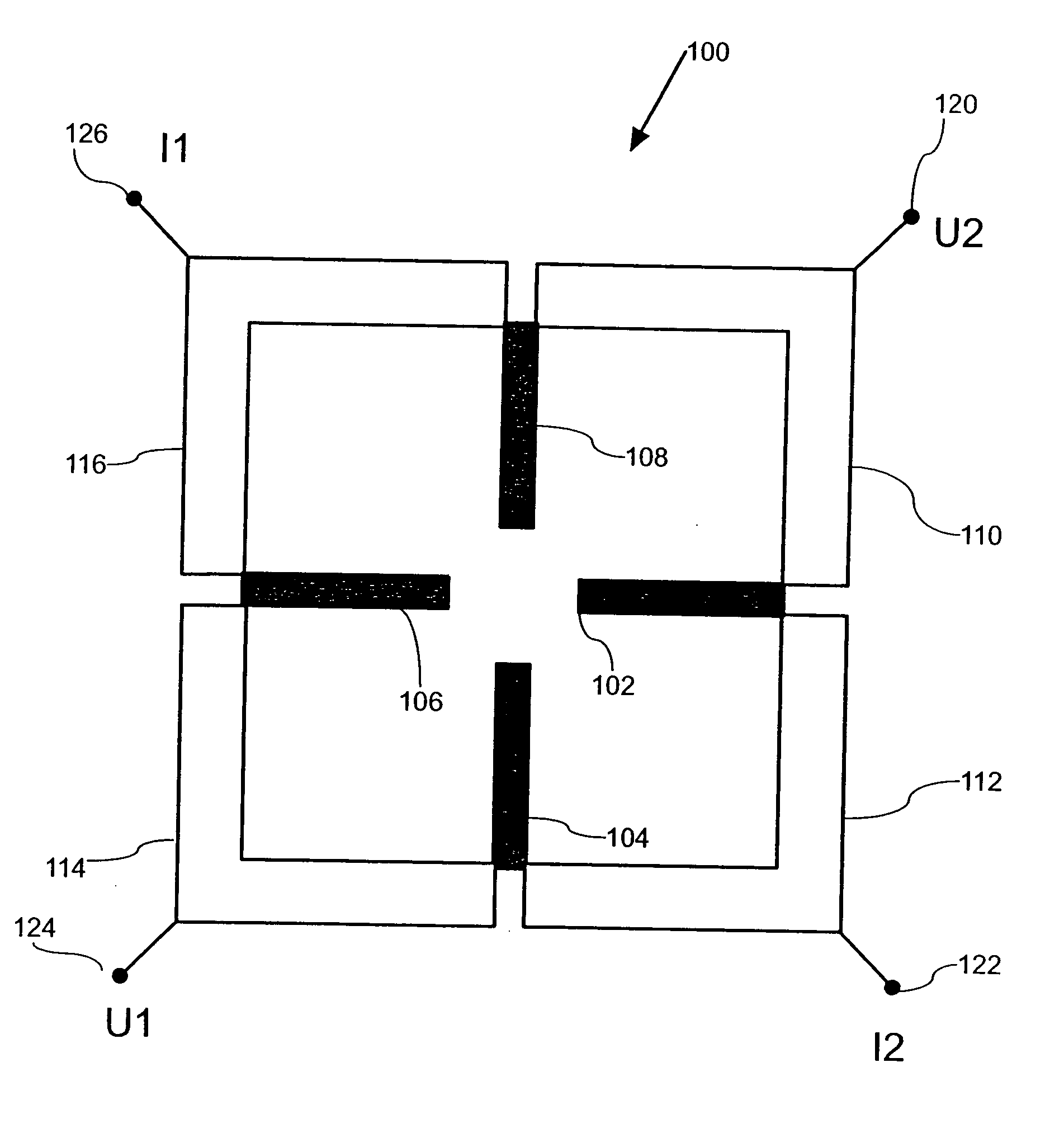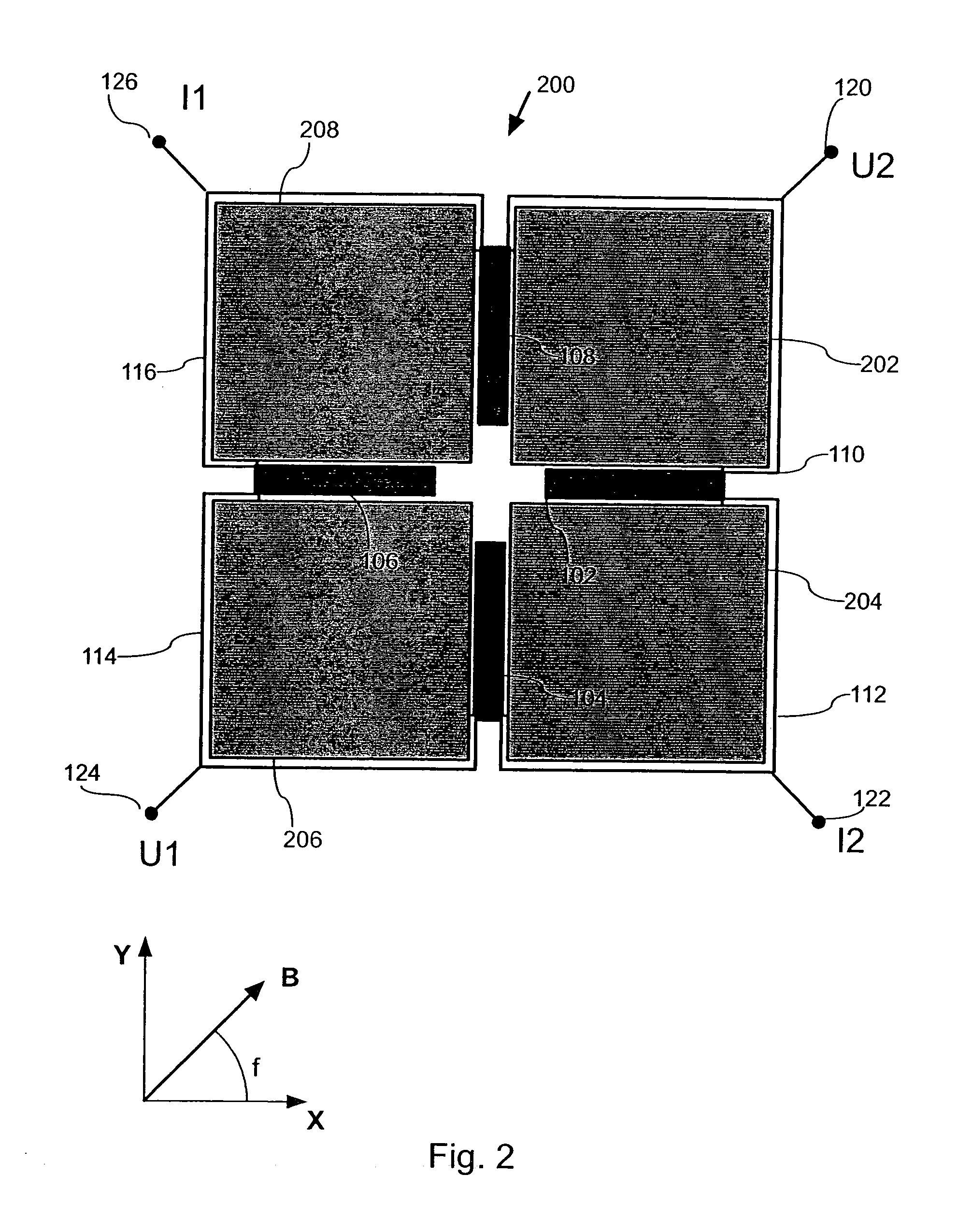Sensor for detection of the orientation of a magnetic field
a magnetic field and orientation sensor technology, applied in the direction of galvano-magnetic devices, magnetic field measurement using galvano-magnetic devices, instruments, etc., can solve the problems of disadvantageous subsequent signal processing, only showing a rather low output signal, and not being able to detect the direction of an externally applied magnetic field by means of a gmr-multilayer system
- Summary
- Abstract
- Description
- Claims
- Application Information
AI Technical Summary
Benefits of technology
Problems solved by technology
Method used
Image
Examples
Embodiment Construction
[0052]FIG. 1 shows a magnetic sensor 100 without flux guides. Therefore FIG. 1 only illustrates the electrical part of the magnetic sensor. The magnetic sensor 100 has four magnetoresistive elements 102, 104, 106, 108 that are connected via electrical conductors 110, 112, 114 and 116. Furthermore, the electrical circuit has four electrical connects 120, 122, 124 and 126.
[0053] The magnetoresistive elements are arranged in two pairs of two magnetoresistive elements featuring the same geometry, electrical properties as well as magnetic sensitivity. One pair of magnetoresistive elements has the horizontally aligned magnetoresistive elements 102 and 106 and the other pair of magnetoresistive elements has the vertically aligned magnetoresistive elements 108 and 104. Magnetoresistive element 102 is connected to magnetoresistive element 104 via the electrical conductor 112. Magnetoresistive element 102 is further connected to magnetoresistive element 108 via the electrical conductor 110. ...
PUM
 Login to View More
Login to View More Abstract
Description
Claims
Application Information
 Login to View More
Login to View More - R&D
- Intellectual Property
- Life Sciences
- Materials
- Tech Scout
- Unparalleled Data Quality
- Higher Quality Content
- 60% Fewer Hallucinations
Browse by: Latest US Patents, China's latest patents, Technical Efficacy Thesaurus, Application Domain, Technology Topic, Popular Technical Reports.
© 2025 PatSnap. All rights reserved.Legal|Privacy policy|Modern Slavery Act Transparency Statement|Sitemap|About US| Contact US: help@patsnap.com



